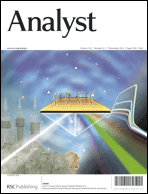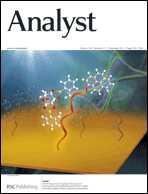We are delighted to highlight the latest covers of Analyst, showing new research on the development and application of a sensory system to detect glucose.
John Fossey from the University Birmingham, UK, and collaborators at the University of Bath, UK, and at the East China University of Science and Technology, China, present two papers describing a new glucose sensor based on the principle of self-assembly and surface plasmon resonance (SPR) optical technique.
The sensor is prepared modifying the surface of a gold electrode with a bis-boronic acid receptor. The receptor contains a glucose selective chemosensor unit and a surface anchoring unit, which allows selective detection of glucose. This system has the unique capacity to label-free and allows detection of molecular reactions in real time with highly sensitivity. According to this research, SPR could be an attractive sensing platform to monitor glucose and possibly other analytes.
To read more about this work, please access the links below. These two papers are free to read, so have a look now:
A bis-boronic acid modified electrode for the sensitive and selective determination of glucose concentrations
Hui-Chen Wang, Hao Zhou, Baoqin Chen, Paula M. Mendes, John S. Fossey, Tony D. James and Yi-Tao Long
Analyst, 2013, 138, 7146-7151
DOI: 10.1039/C3AN01234D
Glucose selective Surface Plasmon Resonance-based bis-boronic acid sensor
Alex Stephenson-Brown, Hui-Chen Wang, Parvez Iqbal, Jon A. Preece, Yitao Long, John S. Fossey, Tony D. James and Paula M. Mendes
Analyst, 2013, 138, 7140-7145
DOI: 10.1039/C3AN01233F












